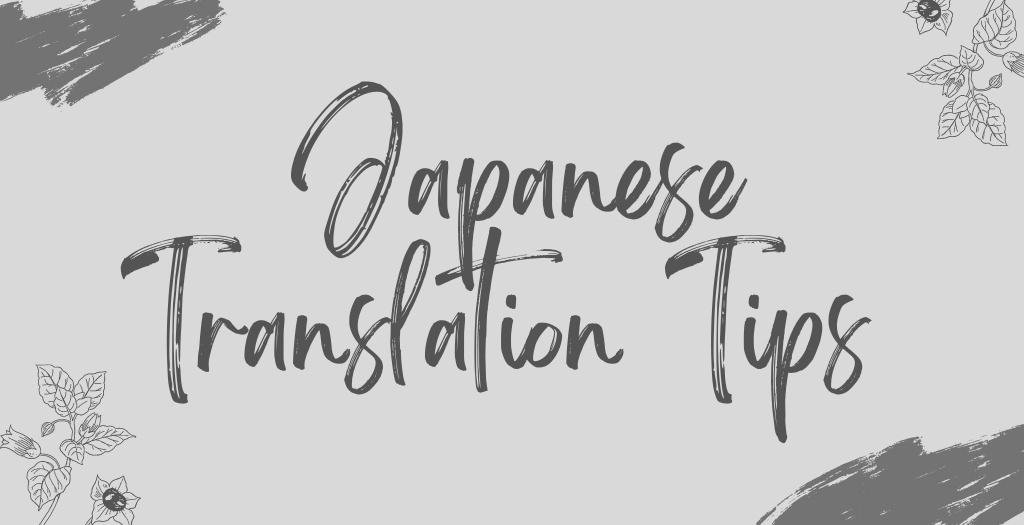You must know the Japanese translation tips to be a pro translator of this language. Both linguistically and culturally, Japanese society is homogenous. Ethnic Japanese make up nearly all of the population. No formal status for the use of Japan’s native language, yet it is the country’s official language. There are around 125 million native speakers around the globe. Japan’s economy is the third-largest in the world, and Japanese is a top 10 language on the Internet. If you’re in the automotive or electronics industries, or both, then Japanese should be high on your list of priority languages to translate into.
ADVICE FOR JAPANESE TRANSLATORS
In terms of language, Japanese and English are vastly different. We should not do the literal translation of a text into another language. Free machine translation software should be avoided at all costs if you want to prevent odd translations. In Western society, we are known for being open and honest. Directness is frowned upon in Japanese society.
In order to convey your message clearly, you must use tact and opacity when communicating. Invite someone to an event by saying “Won’t you come to our event?” or simply “Wouldn’t you want to attend our event?” Asking whether someone wants to come instead of if they want to do anything is a better strategy.
You May Also Read: Hardest Languages To Learn In The World
Be aware of who you’re speaking to. Depending on who you’re speaking to in Japan, the amount of politeness and formality will vary.
Japanese business writing tends to be more formal than American writing. Consequently, direct translation from English to Japanese may come out as sarcastic. Native Japanese speakers are essential since they are familiar with the nuances of the language, as well as how to talk and write at various degrees of formality.
The correct way of addressing someone is by their last name with a suffix attached (-san). Mr. Takahashi would be better known as Takahashi-san.
We use the word “you” commonly in casual conversation in the West as a general pronoun. Please contact us at 1-800-XXXX if you need further assistance. You’d have to approach the consumer in a more official manner if you tried to translate this into Japanese.
Be careful not to come out as blatantly straightforward.
Customer support is available at 1-800-XXXX if you have any queries, Mr./Miss (or Sir/Madame)! “
Inquire about the quality of the job before deciding to engage with a Language Service Provider on a Japanese translation project. You may get a sense of the quality and tone of your translations by having your Japanese reviewers check out the source material. Context is quite essential. Your translation vendor should be a business partner. This is also one of the most crucial Japanese translation tips to keep in mind.
Keep the lines of communication open and free. Also, consider the target audience for your content and the intended purpose of that material.
The Japanese translation team will be able to correctly scope each job to fulfill your requirements.
FAQ (Frequently Asked Questions)
There are a few things you need to do before you begin translating: Read the original text; make notes; conduct research; then read it again. Get to know the original text before you begin translating it!
Do not translate directly from one language to another. Consider Your Audience/Culture and the Message You’re Sending. Then, go back over your translation and make sure it’s correct.
For a Westerner, learning Japanese is a challenging task in and of itself. It’s not easy to learn Japanese because of a completely different alphabet, its context-heavy nature, the usage of honorifics, and the huge variations in language and sentence structure. You can follow our Japanese translation tips for translating with more ease.
Many people use Google Translate, which has some of the most common translation tools. In addition to the three writing systems (hiragana, katakana, and kanji), the text is also translated into romaji.
Japanese characters for Romaji are called “romaji,” which translates to “Roman letters” in the native language. (kanji), which literally translates to “Chinese letters,” is a very similar phrase.
To distinguish between different grammatical situations in Japanese, the nouns are followed by a particle. To distinguish Japanese from other languages, there are two nominative cases: one for the topic of the sentence, the other for the subject.

